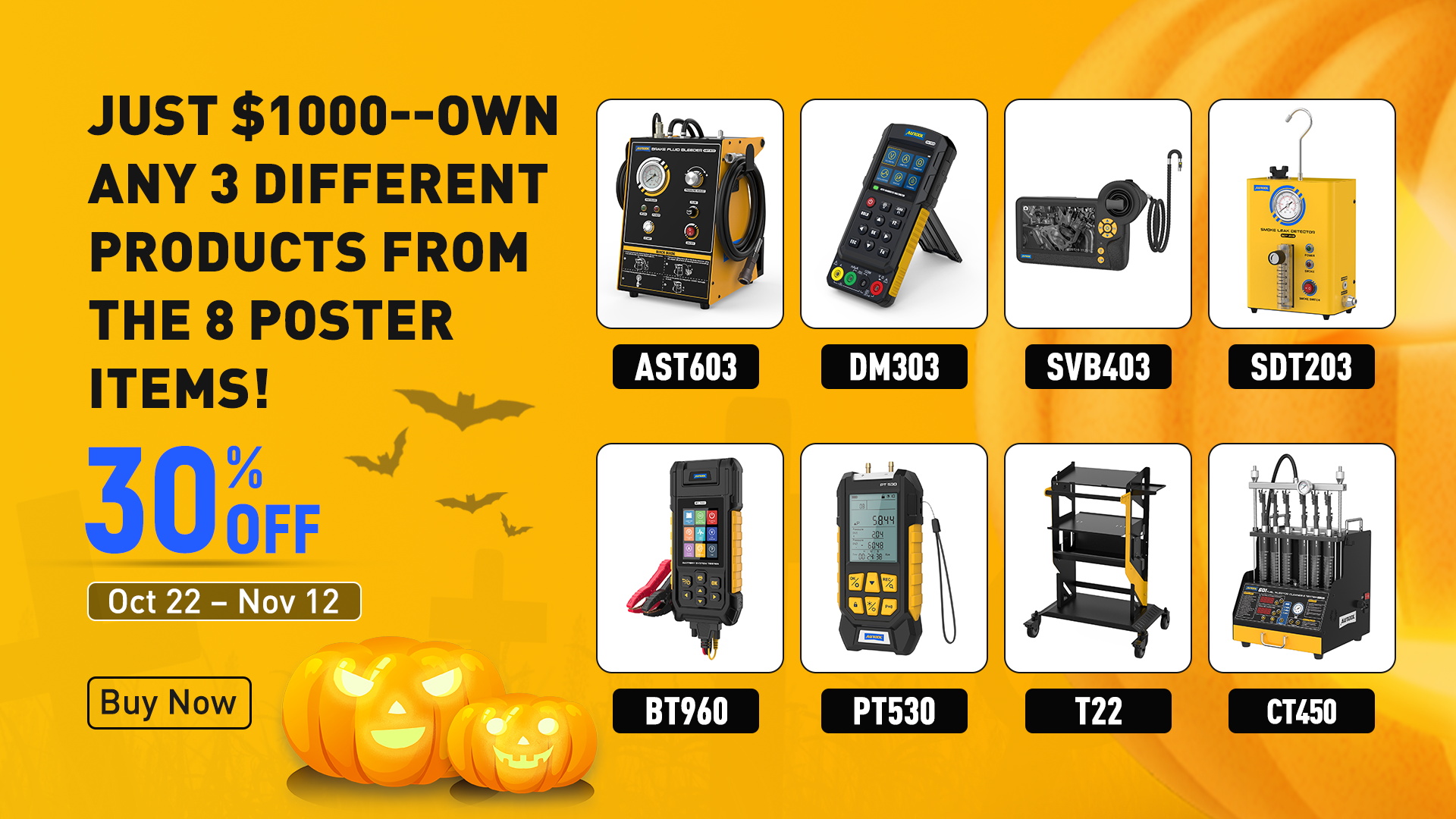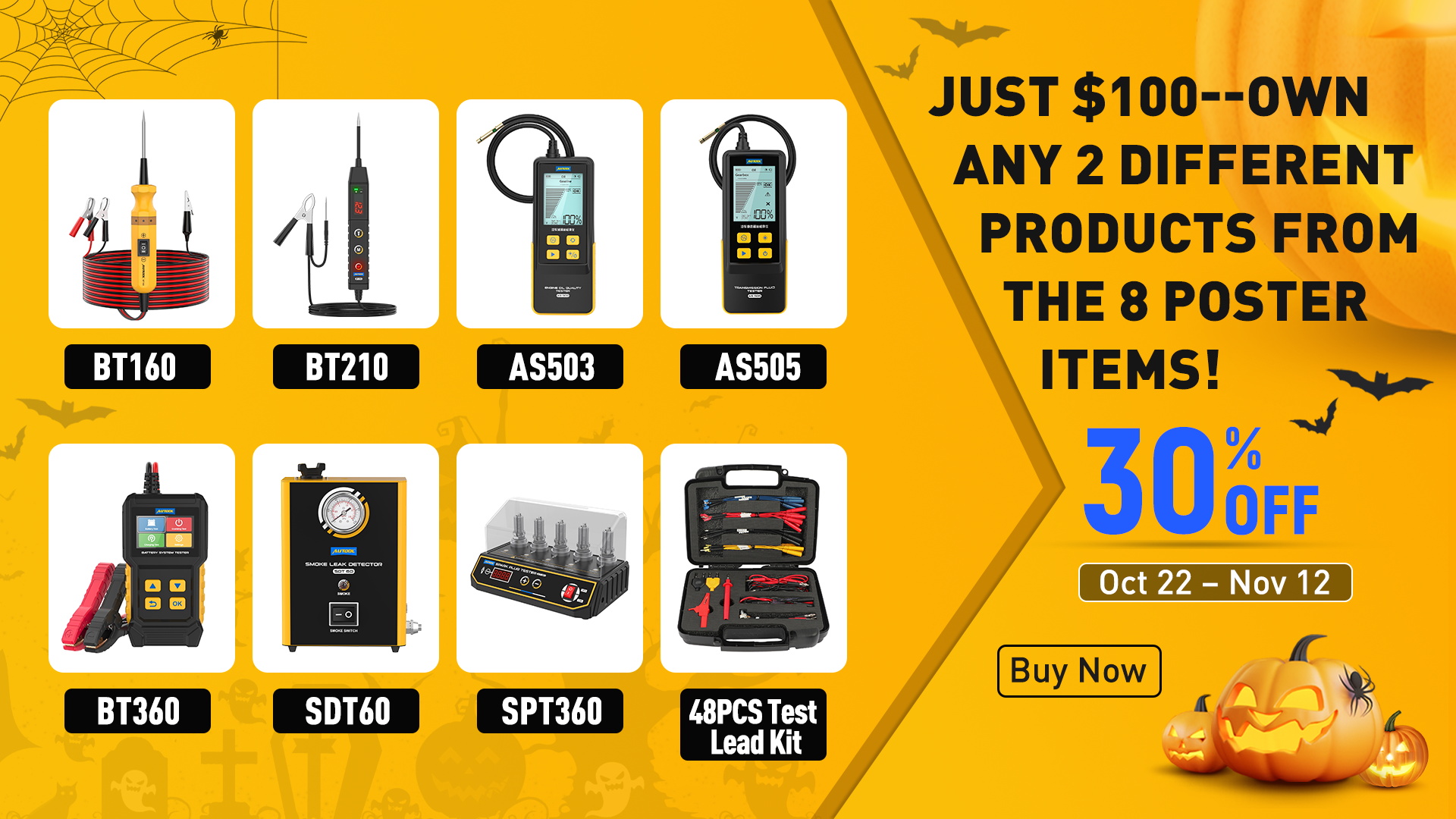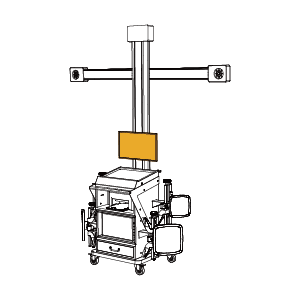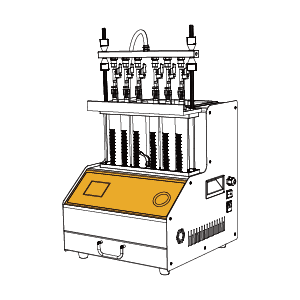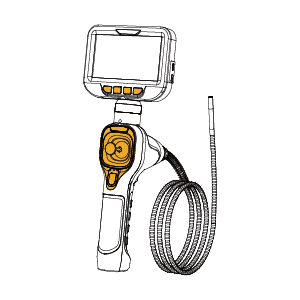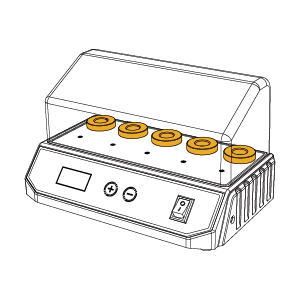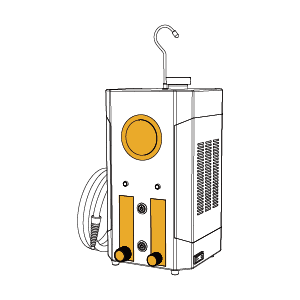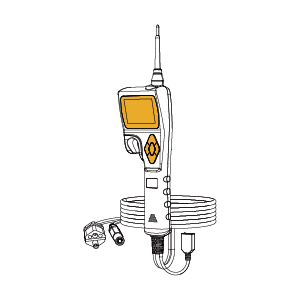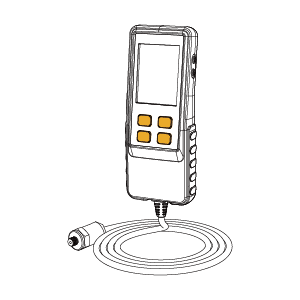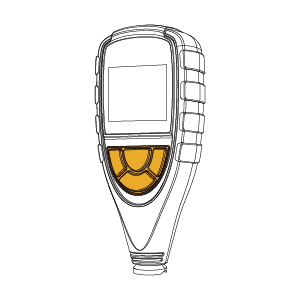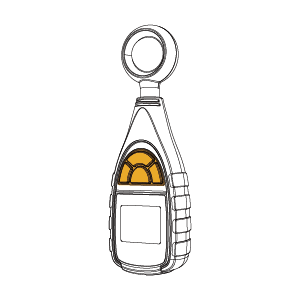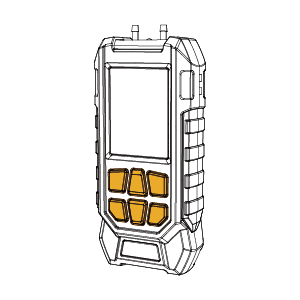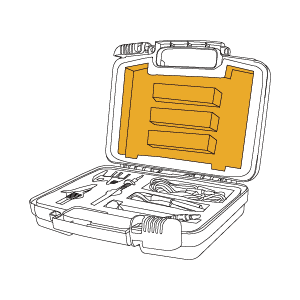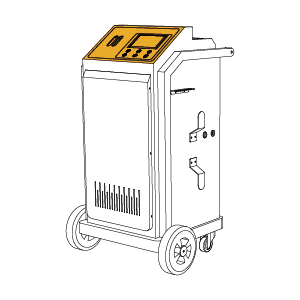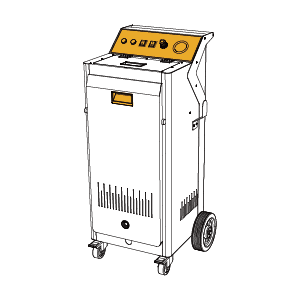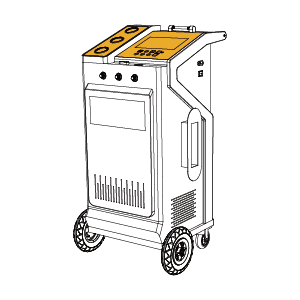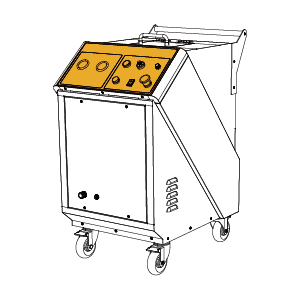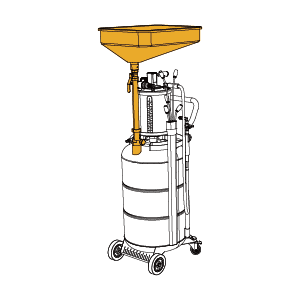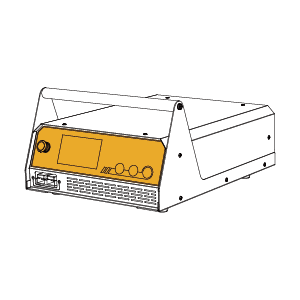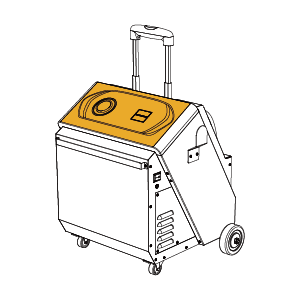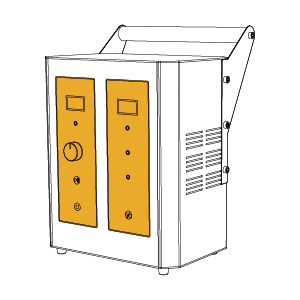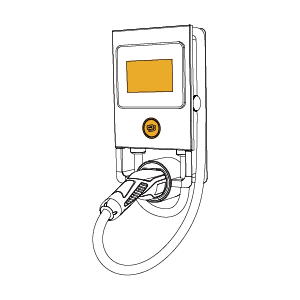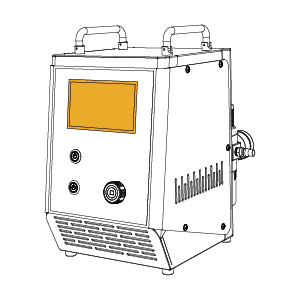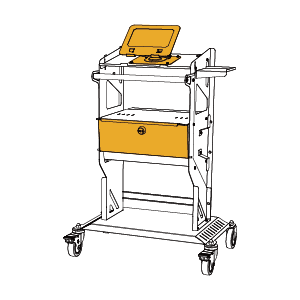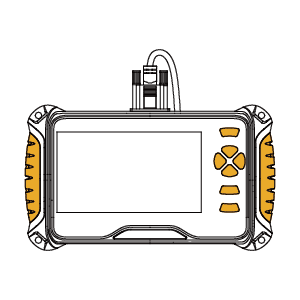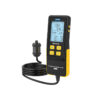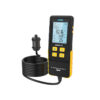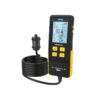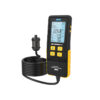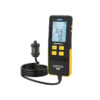Uncategorized
8 Pressure Gauges for Your Workshop
In the automotive repair industry, precise pressure testing is crucial for ensuring the proper operation of vehicles. With advancements in technology, digital pressure gauges have increasingly become the preferred tools in many workshops. This article will introduce you to the AUTOOL series of 8 digital pressure gauges and compare them with traditional pressure gauges, highlighting the advantages of digital pressure measurement.
Cylinder Pressure Gauge
Why Do We Test Automotive Cylinder Pressure?
In the field of automotive repair and testing, the engine cylinder pressure gauge plays a role similar to that of a doctor’s stethoscope. This specialized tool allows technicians to quickly “listen” to the sounds within the engine, helping to assess its health status.
So, what are the functions of a cylinder pressure gauge? Let’s analyze the following points:
- Diagnosing Cylinder Health: Measuring the compression pressure within the cylinder helps determine the health of the cylinder, piston rings, and valves.
- Fault Location: By comparing the compression pressures of different cylinders, technicians can quickly identify low-pressure or leaking cylinders, leading to potential fault diagnosis.
- Performance Evaluation: Normal compression pressure is essential for optimal engine performance. The measurement results assist in evaluating the overall performance of the engine.
How to Use a Cylinder Pressure Gauge:
- Preheat the Engine: Start the engine and allow it to reach normal operating temperature.
- Shut Down the Engine and Remove the Spark Plugs: Ensure all cylinders are in a non-pressurized state.
- Connect the Cylinder Pressure Gauge: Attach the cylinder pressure gauge to the spark plug hole.
- Start the Engine: Briefly start the engine and record the data on the pressure gauge.
- Compare Data: Use the manual or reference data to compare the compression pressures of each cylinder and assess their working condition.
What Are the Differences Between PT610 and Traditional Cylinder Pressure Gauges?

Advantages of AUTOOL PT610 Cylinder Pressure Gauge Compared to Traditional Cylinder Pressure Gauges
- Measurement Range and Accuracy: Traditional cylinder pressure gauges have a limited measurement range, and the needle can easily become misaligned. In contrast, the PT610 offers a wide measurement range and high accuracy, with readings precise to two decimal places. It covers a pressure range of 0-426.6 psi / 0-30 kg/cm² and supports data resetting.
- Display of Average Pressure: Traditional cylinder pressure gauges do not display average pressure values, whereas the PT610 interface shows not only the average pressure but also the ambient temperature and measurement time.
- Data Recording: Traditional gauges require manual recording of each cylinder’s pressure data with paper and pencil, often needing multiple tests to calculate the average pressure. The PT610 can simultaneously record data for six cylinders and save it, reducing the number of tests and saving significant time.
- Visibility in Low Light: Traditional cylinder pressure gauges need to be used in well-lit conditions for accurate readings. The PT610 features a 2.8-inch high-definition display with a backlight design, making the data easy to read even in dark environments.
Oil Pressure Gauge
Why Do We Need to Test Automotive Oil Pressure?
- Engine oil is crucial in automobiles, and we need to regularly check oil pressure to prevent serious issues like cylinder scuffing or bearing failure due to insufficient oil. The oil pressure gauge is used to measure the engine oil pressure, allowing us to determine whether the engine’s lubrication system is functioning properly.
Steps for Operating the Oil Pressure Gauge
- First, remove the oil pressure sensor.
- Choose the appropriate adapter for the vehicle and connect it to the measurement probe, then attach the measurement fitting to the engine.
- Before testing, adjust the pressure value on the device to zero.
- Start the engine and observe the pressure readings on the oil pressure gauge to determine if the oil pressure is normal.

Differences Between PT620 and Traditional Oil Pressure Gauges
- Measurement Range and Accuracy: Traditional oil pressure gauges have a limited measurement range and the needle can easily become misaligned. In contrast, the AUTOOL PT620 offers a wide measurement range (0~426.6 psi, 0~30 kg/cm², 0~29.4 bar) with high accuracy, providing readings precise to two decimal places.
- Display and Construction: Traditional oil pressure gauges typically only have a dial. The PT620, however, features multiple pressure units and uses copper alloy fittings, which are highly durable, wear-resistant, and oxidation-resistant.
- Data Recording and Calculation: Traditional oil pressure gauges require manual data recording and calculation of pressure differentials during idle and acceleration tests. The PT620 can lock test data, displaying readings directly and automatically calculating pressure differentials, allowing users to monitor data while operating the throttle.
- Visibility in Low Light: Traditional oil pressure gauges need to be used in well-lit conditions for accurate readings. The PT620 includes a 2.8-inch high-definition display with a backlight design, ensuring the data is easy to read even in dark environments.
Fuel Pressure Gauge vs. GDI Fuel Pressure Gauge
Why Do We Need to Test Automotive Fuel Pressure?
- Fuel pressure testing is crucial for automotive maintenance and repair, helping to identify potential issues and allowing for timely fixes. The primary purpose of fuel pressure detection is to ensure the proper functioning of the engine’s fuel system, guaranteeing the safety and reliability of the vehicle. The fuel system is one of the most important systems in a car; if it fails, the vehicle may not operate correctly and could even lead to accidents.
- Using a fuel pressure gauge, we can determine if the fuel system is supplying fuel properly, if the engine is burning fuel correctly, and if there are any leaks or excessive pressure issues in the fuel system. Timely and regular fuel pressure testing can enhance vehicle safety and reliability, extend engine life, reduce fuel waste, and lower operating costs. AUTOOL has even released a GDI fuel pressure gauge specifically designed for testing different vehicle types and fuel systems.
Steps for Operating the Fuel Pressure Gauge
1. Disconnect the engine’s fuel line connector.
2. Choose the appropriate adapter for the vehicle and connect it to the measurement probe, adjusting the device’s pressure value to zero.
3. After connecting the measurement fitting to the engine, start the engine.
4. The fuel pressure gauge will display the test pressure, allowing you to determine if the pressure is normal.

Differences Between PT635, PT640, and Traditional Automotive Fuel Pressure Gauges
- Measurement Range and Accuracy: Traditional fuel pressure gauges have a limited measurement range, and the needle can easily fluctuate during testing. AUTOOL PT635 and PT640 have a wider measurement range, eliminating needle instability. Data is displayed directly, making it easy to read, with high accuracy down to two decimal places.
- Ease of Measurement: Traditional gauges often require two people—one to operate the throttle and the other to record the data. PT635 and PT640 can be operated by one person, as the fuel pressure gauge can be positioned in the driver’s seat to monitor data while accelerating.
- Display and Construction: Traditional fuel pressure gauges typically only feature a dial. PT635 and PT640 offer multiple pressure units and use copper alloy fittings, which are highly durable, wear-resistant, and oxidation-resistant.
- Visibility in Low Light: Traditional fuel pressure gauges need to be used in well-lit conditions for accurate readings. PT635 and PT640 include a 2.8-inch high-definition display with a backlight design, ensuring that data is easy to read even in dark environments.
Transmission Oil Pressure Gauge
Why Do We Need to Test Transmission Oil Pressure?
- The primary function of a transmission oil pressure gauge is to measure and control the transmission oil pressure, ensuring the normal operation and performance of the transmission. By testing the oil pressure, we can determine whether the components in the hydraulic control system are functioning properly, allowing for the timely identification and resolution of potential issues.
- The transmission oil pressure tester connects to the oil pressure gauge to detect oil pressure at engine idle and stall conditions, assessing the transmission’s working state. This testing helps identify any leaks in the hydraulic control system and ensures that components like the torque converter, governor, and accumulator are functioning correctly.
Steps for Operating the Transmission Pressure Gauge
1. First, remove the main oil pressure valve from the transmission housing.
2. Choose the appropriate adapter for the vehicle and connect it to the measurement probe.
3. Before testing, adjust the pressure gauge to zero, then connect the measurement fitting to the transmission.
4. Start the engine and perform shifting operations while observing the pressure readings on the transmission oil pressure gauge to determine if the pressure is normal.

Differences Between PT650 and Traditional Transmission Pressure Gauges
- Measurement Range and Accuracy: Traditional transmission oil pressure gauges have a limited measurement range, and the needle can easily fluctuate during testing. The AUTOOL PT650 offers a wide measurement range, eliminating needle instability, with data displayed directly for easy reading, providing high accuracy to two decimal places.
- Display and Construction: Traditional gauges typically only feature a dial. The PT650 not only offers multiple pressure units but also uses copper alloy fittings, which are highly durable, wear-resistant, and oxidation-resistant.
- Visibility in Low Light: Traditional transmission oil pressure gauges need to be used in well-lit conditions for accurate readings. The PT650 includes a 2.8-inch high-definition display with a backlight design, ensuring that data is clear and easy to read even in dark environments.
- Data Recording and Calculation: Traditional gauges require manual recording of data and calculation of pressure differentials during idle and acceleration tests. The PT650 displays data directly, making it simple to read, and automatically calculates pressure differentials.
Brake System Pressure
Why Do We Need to Test Brake System Pressure?
- In a vehicle’s brake system, brake fluid is transmitted to the brake components through pedal operation and mechanical devices. When the brake pedal is pressed, the pressure of the brake fluid increases, generating braking force to slow down or stop the vehicle.
- Regularly checking brake system pressure helps identify issues such as low brake fluid levels. Brake fluid is the medium that transmits pressure to the brake pads; insufficient or leaking brake fluid can lead to abnormal brake pressure. Additionally, pressure anomalies may create air bubbles in the brake fluid, affecting braking force. A leak in the brake system can compromise braking effectiveness, and a faulty brake pump may result in insufficient or unbalanced brake pressure.
Differences of the PT660 Brake System Pressure Gauge
- Measurement Range and Accuracy: Traditional brake system pressure gauges have a limited measurement range. The AUTOOL PT660 has a measurement range of up to 210 bar, with data displayed directly for easy reading. It provides high accuracy, with measurements precise to two decimal places, effectively detecting serious pressure issues in the brake system.
- Display Quality: Traditional gauges typically only feature a dial. The PT660 comes with a high-definition 3-inch LCD backlit display, ensuring readability even in low-light conditions.
- Construction Material: Unlike traditional brake system pressure gauges, the PT660 is made from corrosion-resistant brass, offering excellent conductivity and thermal properties, as well as high-temperature resistance, oxidation resistance, and durability.
- Unit Flexibility: The PT660 supports easy switching between various pressure units, allowing users to switch between Psi, Bar, and kg/cm² as needed, catering to different regional requirements.
Exhaust Back Pressure Gauge
Why Do We Need to Test Exhaust Back Pressure?
- Exhaust back pressure refers to the resistance pressure of exhaust gases from the engine. When exhaust back pressure rises, it can impede the smooth expulsion of exhaust gases, negatively affecting the engine’s power and responsiveness. Proper exhaust back pressure helps the engine efficiently expel waste gases, improving combustion efficiency. However, excessively high or low back pressure can adversely impact engine performance.
Differences of the PT670 Exhaust Back Pressure Gauge
- Measurement Range and Accuracy: Traditional exhaust back pressure gauges typically have a limited measurement range. The PT670 features a wide measurement range, utilizing digital sensing technology and high-precision chips to provide pressure values accurate to two decimal places.
- Display Capabilities: Traditional gauges usually display pressure values in only one unit. The upgraded PT670 features a digital display that shows maximum pressure, minimum pressure, and average differential pressure, providing users with a more intuitive understanding of the data.
- Additional Functions: Compared to traditional gauges, the PT670 includes internal environmental temperature detection and additional features that assist in assessing the condition of the vehicle’s exhaust system.
- Material Quality: The PT670 is made from corrosion-resistant brass, offering excellent conductivity and thermal properties, along with high-temperature resistance, oxidation resistance, and durability.
- Data Locking Feature: The PT670 features a one-touch data locking function to prevent accidental changes to readings, ensuring the accuracy of the data.
Air Suspension Tester
Why Do We Need to Test Air Suspension?
- With the rapid development of the automotive industry, people’s demands for comfort and safety in vehicles are rising. Air suspension, as a new type of shock absorption technology, is gaining increasing attention and recognition. Traditional automotive suspension systems primarily rely on hydraulic or spring-based dampers. However, these methods often fall short when faced with complex road conditions, resulting in poor shock absorption and significant vehicle jolting, which negatively impacts driving comfort.
- In contrast, air suspension technology uses air as the damping medium. Through components like air compressors and airbags, it achieves a smoother and more stable damping effect. This system effectively reduces vehicle bouncing and vibrations when encountering potholes or during deceleration, significantly enhancing passenger comfort.
Advantages of the PT680 Compared to Traditional Air Suspension Leak Testers
- Dual-Channel Pressure Detection: Simultaneously measures the pressure of two shock absorbers at different locations and calculates the pressure difference between them.
- High-Precision Sensor: Includes temperature compensation with a pressure range from 0 to 20 bar to meet various operational needs.
- Multi-data Display: Simultaneously displays real-time pressure values, maximum and minimum values, and the pressure difference.
- Multiple Unit Switching: Supports switching between 7 different units (Kpa, mbar, inHg, inH2O, bar, psi, kg/cm²).
- One-click Data Locking: Prevents accidental changes to readings, ensuring data accuracy. Allows locking of two sets of data to enable simultaneous display and comparison of all four wheels.
- Various measurement connectors: Comes with measurement fittings of different specifications, suitable for various diameter.
- Not Affected by Dark Environments, equipped with screen backlight design to meet various environmental needs.
- Suitable for Pressure Measurement and Pressure-Holding Leak Detection of Various Air Suspension Models: Capable of testing two simultaneously or measuring individually.
Related Blog:
AUTOOL Official Team
Mobile/WhatsApp/Wechat: +86 189 2647 7404
Email: shop.autooltech.com
Website Official Shop: https://shop.autooltech.com/

